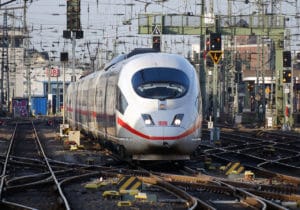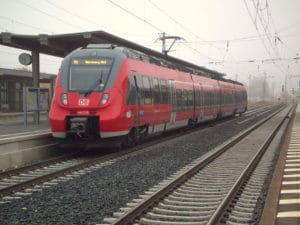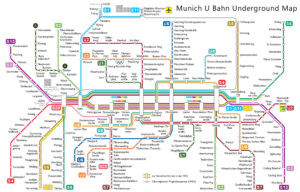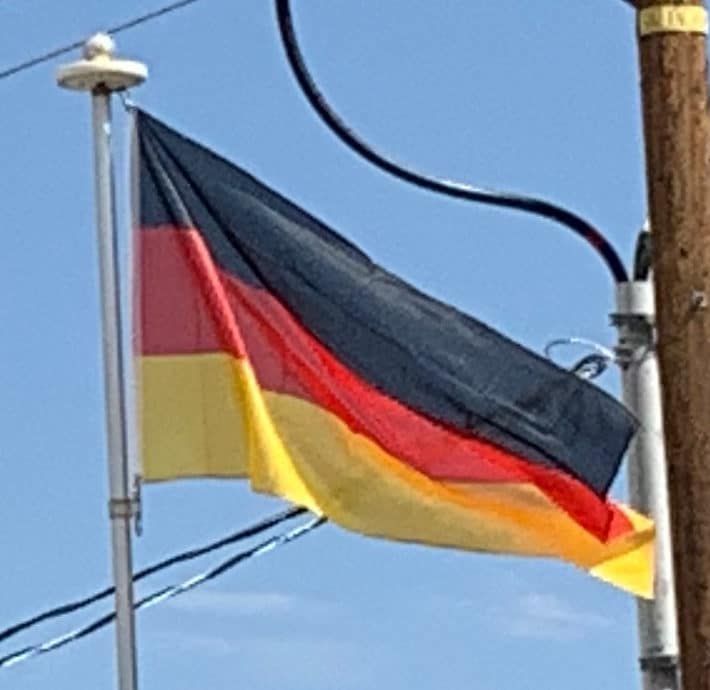The fastest high-speed train operated by Deutsche Bahn, the InterCityExpress or ICE connects major German and neighbouring international centres such as Zurich, Vienna, Copenhagen, Paris, Amsterdam and Brussels. The rail network throughout Germany is extensive and provides excellent service in most areas. On regular lines, at least one train every two hours will call even in the smallest of villages during the day. Nearly all larger metropolitan areas are served by S-Bahn, U-Bahn, Straßenbahn and/or bus networks.

The German government on 13 February 2018 announced plans to make public transportation free as a means to reduce road traffic and decrease air pollution to EU-mandated levels. The new policy will be put to the test by the end of the year in the cities of Bonn, Essen, Herrenberg, Reutlingen and Mannheim. Issues remain concerning the costs of such a move as ticket sales for public transportation constitute a major source of income for cities.
Almost all major metro areas of Germany have suburban rail systems called S-Bahnen (Schnellbahnen). These usually connect larger agglomerations to their suburbs and often other regional towns, although the Rhein-Ruhr S-Bahn connects several large cities. A S-Bahn doesn’t skip stations and runs more frequently than other trains. In Berlin and Hamburg the S-Bahn has a U-Bahn-like service and uses a third rail whereas all other S-Bahn services rely on regular catenary power supply.

Relatively few cities have a full-fledged underground U-Bahn system; S-Bahn (suburban commuter railway) systems are far more common. In some cities the distinction between U-Bahn and S-Bahn systems is blurred, for instance some S-Bahn systems run underground, have frequencies similar to U-Bahn, and form part of the same integrated transport network. A larger number of cities has upgraded their tramways to light rail standards. These systems are called Stadtbahn (not to be confused with S-Bahn), on main line rails.
Cities with U-Bahn systems are:
Berlin (U-Bahn)
Hamburg (U-Bahn)
Munich (U-Bahn)
Nuremberg/Fürth (U-Bahn)

Germany was among the first countries to have electric street – running railways and Berlin has one of the longest tram networks in the world. Many West German cities abandoned their previous tram systems in the 1960s and 1970s while others upgraded them to “Stadtbahn” (~light rail) standard, often including underground sections. In the East, most cities retained or even expanded their tram systems and since reunification a trend towards new tram construction can be observed in most of the country. Today the only major German city without a tram or light rail system is Hamburg. Tram-train systems like the Karlsruhe model first came to prominence in Germany in the early 1990s and are implemented or discussed in several cities, providing coverage far into the rural areas surrounding cities.
Air:
Short distances and the extensive network of motorways and railways make airplanes uncompetitive for travel within Germany. Only about 1% of all distance travelled was by plane in 2002. But due to a decline in prices with the introduction of low-fares airlines, domestic air travel is becoming more attractive. In 2013 Germany had the fifth largest passenger air market in the world with 105,016,346 passengers. However, the advent of new faster rail lines often leads to cuts in service by the airlines or even total abandonment of routes like Frankfurt-Cologne, Berlin-Hannover or Berlin-Hamburg.
